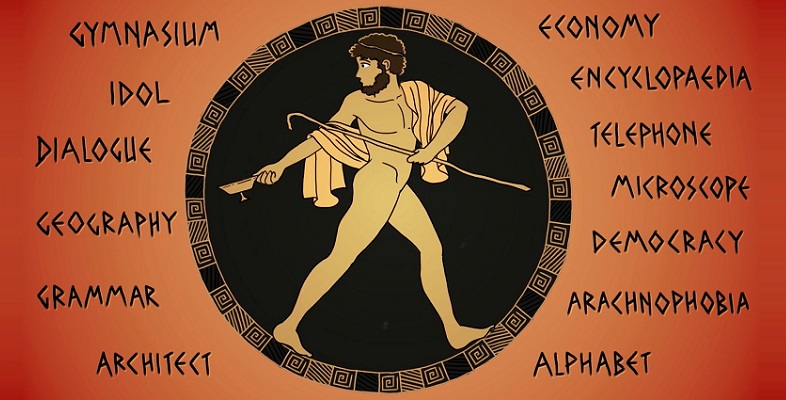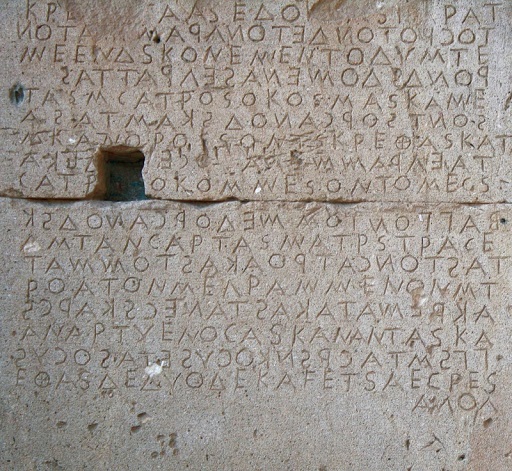7.2 The Gortyn code
One style of writing combined both directions, running from right to left and then left to right on alternate lines. In Greek this was called boustrophedon, literally ‘ox turning’ (from βοῦς, ox and στρέφω, I turn), recalling the furrows inscribed into the earth by a plough.
Activity 8 Reading boustrophedon
Look at the following example of boustrophedon from the city of Gortyn on the southern coast of Crete. Try to identify which lines go from right to left and which from left to right. Which letters help most in determining the direction of the writing?
Discussion
The top line in the photograph runs from left to right, with the direction alternating after that. The direction is especially clear in the shape of letters such as epsilon (Ε), kappa (Κ) and rho (Ρ). These are the first letters at the top left of the image (ΚΡΕ), although the epsilon is damaged and not easy to read. Some letters look the same in either direction, for instance alpha (Α), delta (Δ), omicron (Ο) and tau (Τ).
You should note, however, that this photograph starts with the second line. There was a damaged line above running from right to left. The inscription therefore began at the top right.
This inscription, known as the Gortyn code, is thought to date to around the middle of the fifth century BCE. It consists of twelve columns of text inscribed on the curved wall of a building. Each column consists of approximately 55 lines, except for the twelfth (displayed in the photograph), which is 19 lines long. The code contains laws regulating society at Gortyn, related to such matters as rape and other sexual offences, divorce, marriage, rights over children, inheritance, property and adoption. It is a fine illustration not just of boustrophedon but of how an inscription can shed light upon places, periods and practices that are not well known from Greek literature.

